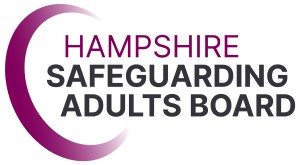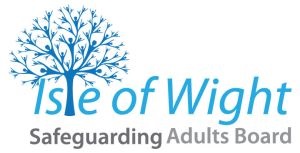
4LSAB Multi-Agency Guidance on Safeguarding Adults in Commissioned Services
Contents
-
Guidance on Safeguarding in Commissioned Services
- Introduction
- Provider responsibilities
- Commissioner responsibilities
- Responding to concerns about individuals
- Responding to concerns about organisational abuse
- Enquiry Process Including Large Scale S42 Safeguarding Enquiries
- Suspending or terminating placements
- Direct Payments
-
Appendices
- Appendix A: Suggested criteria for placing cautions or suspending placements
Guidance on Safeguarding in Commissioned Services
Introduction




This guidance is designed to provide a clear framework with which to respond to safeguarding concerns occurring in all commissioned health and social care services. This framework recognises that promoting wellbeing and protecting safeguarding adults against abuse and neglect is an integral part of the commissioning and contracts processes and is underpinned by the following six principles:
| Principle | Outcome Statement |
|---|---|
| Empowerment – people being supported and encouraged to make their own decisions and informed consent | “I am asked what I want as the outcomes from the safeguarding process and these directly inform what happens.” |
| Prevention – it’s better to take action before harm occurs | “I receive clear and simple information about what abuse is, how to recognise the signs and what I can do to seek help.” |
| Proportionality – least intrusive responses appropriate to presenting risks | “I am sure that the professionals will work in my interests, as I see them and they will only get involved as much as needed.” |
| Protection – support and representation for those in greatest need | “I get help and support to report abuse and neglect. I get help so that I am able to take part in the safeguarding process to the extent to which I want.” |
| Partnership – local solutions through services working with their communities. Communities have a part to play in preventing, detecting and reporting neglect and abuse | “I know that staff treat any personal and sensitive information in confidence, only sharing what is helpful and necessary. I am confident that professionals will work together and with me to get the best result for me.” |
| Accountability – accountability and transparency in delivering safeguarding | “I understand the role of everyone involved in my life and so do they.” |
Provider responsibilities
There is an expectation that all Health and/or Social Care providers' services must have in place a range of processes to enable them to meet their duty of care to safeguard service users. In addition to providing high quality and safe care, providers are expected to:
- Have up to date guidance on adult safeguarding policy and procedure consistent with the Hampshire, Isle of Wight, Portsmouth and Southampton Safeguarding Adults Multi Agency Policy.
- Ensure that all staff are aware of, and can act on concerns and allegations in accordance with, the 4LSAB Allegations Management Framework in relation to anyone who has contact with adults at risk. The policy provides details for the management and reporting of allegations relating to both children [Local Authority Designated Officer (LADO)] and adults [Safeguarding Allegations Management Advisor (SAMA)].
- Have care governance arrangements in place to prevent abuse or neglect.
- Have robust internal reporting and recording mechanisms from the care staff to senior management/Board and vice versa to ensure relevant action, learning and feedback, in order to proactively monitor the risk of abuse and neglect in the care setting.
- Adopt robust recruitment and employment practices including for agency staff, with: references; right to work checks; gaps in employment checks; ID (including photo ID - for good practice, see the NHS Employers identity check guidance) and appropriate DBS checks are in place prior to the commencement of employment. Ensure they have mechanisms in place for review and risk assessment as needed. Recruitment practices should be in line with the 4LSAB Safer Recruitment Guidance.
- The care sector has been identified by the Gangmasters and Labour Abuse Authority as a sector where there is a high risk of labour exploitation, including more severe forms such as modern slavery. Information on identifying and responding to Modern Slavery can be found in the 4LSAB Multi-Agency Guidance on Modern Slavery and Human Trafficking (see also the Rapid Read). Guidance on robust international recruitment practices can be found on the South East Social Care Alliance website.
- Ensure all staff receive training commensurate with their roles and responsibilities on the nature of abuse and neglect, recognising the signs and how and when to report concerns, and ensure staff are competent. Frequency of refreshing training and reviewing competency will be dependent on the role. For further information see the 4LSAB Learning and Development guidance.
- Ensure all staff also receive training in Modern Slavery, the Mental Capacity Act, Deprivation of Liberty Safeguards, and the Prevent agenda, commensurate with their roles and responsibilities.
- Have a whistle blowing policy to enable staff to raise concerns including outside their organisation to the Local Authority where necessary.
- Have robust mechanisms for service users, relatives and visitors to raise concerns including a Complaints Policy and relevant details for reporting to Adult Social Care.
- Have an understanding of the role and function of advocacy and how to make a referral to advocacy. In liaison with the local authority as required, ensure that where an individual would have ‘substantial difficulty’ participating without the involvement of an advocate, and there is no appropriate individual available to support and represent the person’s wishes who is not paid or professionally engaged in providing care or treatment to the person or their carer, that they have access to an advocate. A family member or friend may be an appropriate person to represent the individual, provided they are available and willing to support the adult and the adult consents to them acting, or, if they lack capacity to consent, it is in their best interests for that person to act. Further information can be found in the 4LSAB One Minute Guide to Advocacy.
- For registered staff governed by professional regulation, ensure they understand how their professional standards and requirements underpin their organisational roles to prevent, recognise and respond to abuse and neglect.
- Ensure all job descriptions include a clear statement on the responsibility to prevent abuse and neglect and to report concerns. This statement must be commensurate with the responsibilities of the post.
- Ensure that disciplinary procedures are compatible with the responsibility to protect adults at risk of abuse or neglect.
- Address abuse or neglect in their organisation and protect the adult from further harm.
- The duty of candour requires registered providers and registered managers (known as ‘registered persons’) to act in an open and transparent way with people receiving care or treatment from them. The regulation also defines ‘notifiable safety incidents’ and specifies how registered persons must apply the duty of candour if these incidents occur. For further information see Regulation 20 of the Health and Social Care Act 2008 (Regulated Activities) Regulations 2014
- At the point the concern is raised, the Local Authority must be informed as well as the CQC and also the ICB where the latter is the commissioner.
- Respond to allegations of abuse, neglect or misconduct including having robust processes in place to investigate the actions of members of staff and volunteers.
- Information relating to the action taken and what the outcome is must be made available to the Local Authority.
- Co-operate with Section 42 safeguarding enquiries being made by or on behalf of the Local Authority. Provide timely access to premises, records, staff and service users and relatives (including people funding their own care).
- Records should be made available to any independent advocate supporting the adult.
- Report allegations against staff to the Safeguarding Adults Lead in their organisation.
- Ensure that the person who is alleged to have caused harm is appropriately informed and supported during the process
- Ensure throughout the process that the principles of Making Safeguarding Personal is followed, ensuring that the wishes of the adult have been considered.
- Ensure that information, advice and support is provided to the adult(s) harmed or their representative.
- Ensure compliance with the Fire Safety Framework and appropriate, providers should pay particular attention to risk assessments especially when service users may have a propensity to hoard.
Commissioner responsibilities
As part of this framework, there is an expectation that commissioners will have in place a range of processes to ensure service users receive good quality, safe and effective care. They must assure themselves that a provider is capable and competent in responding to allegations of abuse or neglect, including that they have robust processes in place to investigate the actions of members of staff. When making an out of area placement or spot-purchasing a service commissioners should be aware that there are increased risks because of a lack of an established relationship with the provider, and should ensure robust oversight.
Commissioners should encourage an open culture around safeguarding, working in partnership with providers to ensure the best outcome for the adult. Commissioners will be transparent and proportionate in any decisions and actions taken to safeguard service users and specifically it will:
- Place service users’ well-being, quality of life and safety at the centre of all commissioning activity.
- Offer regular assurance of the safety and effectiveness of the services commissioned.
- Respond promptly and effectively to concerns about possible abuse or neglect arising in regulated care and support settings, adopting a person-led and outcome-focused approach.
- Ensure responses are proportionate to the nature and level of concerns raised and that these are undertaken by the appropriate body or organisation.
- Inform providers at the outset about the nature of any concerns and share invitations to meetings and minutes of meetings as appropriate.
- Request the provider to co-operate with a Section 42 enquiry when the concern relates to the actions or conduct of staff. The Local Authority will ultimately approve whether the provider’s response has been sufficient to deal with the safeguarding concern and, if not, to undertake any enquiry of its own and any appropriate follow up action (e.g. referral to CQC, professional regulators).
- There will be circumstances when it is inappropriate or unsafe for the provider to undertake a section 42 enquiry. For example, this could be a serious conflict of interest on the part of the employer, concerns having been raised about ineffective past enquiries or serious, multiple concerns, or a matter that requires investigation by the police.
- Work in partnership with care providers ensuring responses are proportionate and based on a clear assessment and evidence of risk.
- Focus on service development and the achievement of sustained improvement within services.
- Maintain up to date, accurate information on all safeguarding adults concerns arising in regulated care settings to ensure informed decision making and risk management.
- Clearly document and review any actions or decisions taken under safeguarding adults arrangements.
- Work in partnership across Local Authority and NHS Commissioning organisations and other funding organisations sharing relevant information as appropriate.
- Make decisions to suspend and/or terminate a placement(s), service, or contract independently of any enforcement action a regulator or other body (for example, CQC, UKVI or other local authority) may be taking and/or criminal proceedings.
- Ensuring that appropriate processes are in place to respond swiftly and appropriately in the event of a home closure, provider failure or contractual termination.
The Out-of-Area Safeguarding Adults Arrangements: Guidance for Inter-Authority Safeguarding Adults Enquiry and Protection Arrangements will be used to determine which Local Authority should lead the safeguarding process and which clarifies respective roles and responsibilities of host and placing authorities e.g. host authorities convene and manage the overall safeguarding process whereas placing authorities undertake specific activities aimed at safeguarding the individual such as assessment, review, protection planning and monitoring of care. Commissioners should be aware that there are higher risks associated with out of area placements and they should therefore ensure that they have robust arrangements in place for review.
As this is an overarching Framework, each commissioning organisation will develop its own business process detailing how it will implement this framework internally.
Responding to concerns about individuals
Concerns relating to individual service users will be assessed by the Local Authority. If there is reasonable cause to suspect that an adult may be experiencing or at risk of abuse or neglect, then it will make (or cause to be made) enquiries to determine what (if any) action needs to be taken and by whom. The adult at risk (or their representative) should be asked their views on the situation and what outcome they are seeking and should be involved as far as possible in the process.
A person who has been assessed as lacking capacity to make decisions about their care and support should be provided with an Independent Mental Capacity Advocate (IMCA) if there is no one suitable to represent and support them. A person assessed as having capacity to make decisions about their care and support may be offered the support of an independent advocate if they would experience ‘substantial difficulty’ in being involved in the process and where there is no other suitable person to represent and support them. It would be the responsibility of the Local Authority to arrange advocacy support even when another organisation is leading the Section 42 enquiry. Further information can be found in the 4LSAB One Minute Guide to Advocacy.
The outcome of the safeguarding enquiry and subsequent actions should be recorded on the client record system.
Responding to concerns about organisational abuse
Where there are allegations or concerns of organisational abuse where there is a high level of risk and/or complexity that places several service users at risk of harm or abuse the 4LSAB Large Scale S42 Safeguarding Enquiry Protocol should be followed.
For concerns about organisational abuse for which a Large Scale S42 Safeguarding Enquiry is not indicated, the safeguarding process must be formally invoked (via a section 42 enquiry), be clearly documented and the evidence trail should provide information including:
- The nature of any allegations and evidence of harm arising from the neglect/poor practice alleged.
- Information about who is involved (adults harmed and people alleged to have caused harm), the period of time in which the harm is thought to have been occurring.
- Any history of safeguarding concerns, subsequent interventions and the outcome of these.
- The outcomes of the safeguarding enquiry and an assessment of these in the context of the provider’s contractual requirements.
- Any other action taken to rectify the situation.
- An assessment of the risks posed to the service user(s) by remaining in the placement including an assessment of the broad risks to all service users and how this informs the purchasing decision.
Where care reviews are required on other service users to ascertain if they are also at risk, these should take place within the usual care management process and recorded as such. If harm or risk of harm is indicated for any other service user during the course of these reviews, a safeguarding concern should then be raised for each individual for whom this is the case.
Contracts, procurement and quality improvement representatives should be actively involved in the safeguarding activity relating to organisational abuse and attend meetings as appropriate. In some circumstances, it may be appropriate for commissioning, contract team or quality improvement teams to lead the safeguarding enquiry.
Equally, where there is evidence of systemic abuse and neglect and non-compliance with regulatory standards, the CQC must be informed and requested to take action.
Where there is evidence of potential criminal offences including offences relating to wilful ill-treatment or neglect, the police must be informed and requested to take action.
Wilful ill-treatment or neglect of an adult with needs of care and support is an offence under a number of statutes. Where the person lacks capacity, their wilful ill treatment or neglect is an offence under section 44 of the Mental Capacity Act 2005. Section 127 of the Mental Health Act 1983 Act makes it a criminal offence to ill-treat or wilfully neglect a person receiving treatment, subject to a guardianship order or subject to after-care under supervision for a mental disorder in hospital or mental nursing care home by staff. Wilful neglect or ill-treatment of adults in health and social care services is a criminal offence under the Criminal Justice and Courts Bill. This offence protects adults receiving domiciliary care but not those cared for informally, such as by a friend or family member. This offence allows the prosecution of both health and social care staff and organisations.
Commissioning organisations will keep records of safeguarding concerns and enquiries and their outcomes in relation to the services that they commission.
Any repeating and/or escalating pattern of concerns within a service should trigger consideration of a Large Scale S42 Safeguarding Enquiry to identify any underlying issues which may be adversely impacting on the operational effectiveness of the service and the improvement actions required.
The local authority will review its commissioning decisions where there are safeguarding concerns relating to a service or where CQC has rated a service Inadequate or Requires Improvement.
Enquiry Process Including Large Scale S42 Safeguarding Enquiries
It is imperative that a meeting be held with all relevant agencies at the earliest opportunity and within five working days of the decision to progress to a Large Scale S42 Safeguarding Enquiry.
Please refer to the 4LSAB Large Scale S42 Safeguarding Enquiry protocol for detailed information about when to initiate a Large Scale S42 Safeguarding Enquiry and the process to follow.
The responsible manager, registered manager, owner of the service and the nominated individual should be informed as soon as possible of the concerns. Initially this should be done verbally and subsequently followed up in writing by email with read and delivery receipt or by letter (which should be by recorded delivery). All communications should explain the nature of the concerns, what aspect of the contract these relate to, the action needed to rectify the situation and the timescales within which this is to be achieved. The remedies that will be applied in the case of non-compliance with the contract should also be stated.
Suspending or terminating placements
Restrictions on the commissioning, suspension or termination of placements under the contract are consistent with the commissioner’s duty of care. Due process should be followed to avoid or minimise the risk of litigation. This should include working alongside the provider and would include making sure there is a clear evidence trail to justify the decision and ensuring that issues and concerns are compared to the requirements of the contract. It should also be clear on when the decision to restrict or suspend is going to be reviewed and what requirements the provider will need to meet and in what timescales in order for restrictions to be lifted. Safeguarding provisions should be built into commissioning and contract requirements.
In the case of serious risk to the life, health or well-being of a service user and/or severe risk immediate action should be taken as part of the coordinated safeguarding process to protect the safety and well-being of service users such as suspending new placements, removal of the alleged person to have caused the harm, bringing in specialist staff to address issues identified and removing service users based on evidence of risk.
Where a provider feels unable to address the safeguarding issues the provider may take the decision to terminate the service. Local authorities will need to take action in line with their provider failure procedures.
Please refer to Appendix A for suggested criteria for placing cautions or suspending placements.
Direct Payments
The care and support statutory guidance issued under the Care Act 2014 states:
“The local authority must be satisfied that the direct payment is being used to meet the care and support needs set out in the plan, and should therefore have systems in place to proportionally monitor direct payments usage to ensure effective use of public money”.
Direct payments should only be given and continued if certain conditions are met. If as part of a Safeguarding Enquiry, the Local Authority identifies that one or more conditions have been breached, a decision can be taken to terminate the Direct Payment (section 33(5) of the Care Act 2014). This would include concerns relating to “sub-standard care” and safeguarding. The Local Authority must be satisfied that the direct payment to the adult or nominated person is appropriate to meet the needs of that individual and as such has a duty to ensure that the care provided is safe. The Local Authority can therefore terminate the direct payment until the required standard has been achieved.
Appendices
Appendix A: Suggested criteria for placing cautions or suspending placements
| Cautions | Suspensions |
|---|---|
| Single issue rather than systemic | Concerns form part of a pattern of organisational abuse placing service users at significant risk |
| Not part of an apparent pattern of abuse | Section 42 enquiry relating to an individual service user identifies serious concerns for others |
| No previous history of similar incidents recorded for the service provider | Serious harm, injury or fatality involved |
| Concerns have occurred in the past, but at lengthy and infrequent intervals | Deliberate intent to exploit or harm indicated |
| Police investigation to establish if a crime has been committed | Criminal offences may have been committed |
| No clear criminal offence described in the safeguarding concern | Care/clinical/nursing standards fall well below accepted standards placing service users at significant risk |
| No indication of on-going risk to the adult or other service users | Significant breach of an implied or actual ‘duty of care’ |
| Poor management of service, however Provider co-operative and willing to engage | Systemic and on-going poor management of service placing service users at significant risk |
| Systemic issues / incident being managed appropriately by the provider | Inability of provider to sustain improvements |
| Limited involvement of the provider with the safeguarding process | Inability or unwillingness of provider to engage in the safeguarding process |
| Provider unwilling to provide access to service user, records or premises on a one-off basis | Provider unwilling to provide access to service user, records or premises on an ongoing basis |
Where risk cannot be mitigated and where there is a significant risk to individuals, termination may need to be considered.

